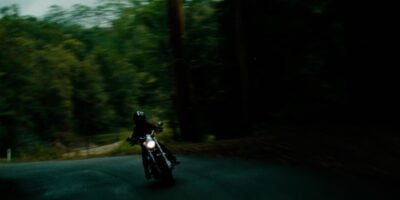In today’s social media/digital age, a pathway to fame can come with a simple viral photo or video. For British artist Sophie Tea, the ‘glitter boob’ festival look was what started it all for her.
Inspiring a trend that was quick to travel to festivals and events right around the globe, Sophie’s platform to exhibit her art has grown as has her reputation as an independent artist.
While initially drawing people to her social media through the glittery craze, Sophie began boosting her reputation online by selling her artwork via Instagram.
Now, she’s set to make her first million in doing so.
“The Glitter Boob Craze was a huge opportunity for me and I’m so grateful for it!” she enthuses.
“I absolutely did not expect for it to have gained the international traction like it did. It was actually crazy. I was featured in Playboy, on The Ellen Show, on MTV!”
https://www.youtube.com/watch?v=70kadMRkiws
How does one keep their head and work focus straight though, when international opportunities keep throwing themselves one’s way? As Sophie mentions, having a strong network around her has been crucial.
“My best friend who set up the glitter company SHRINE made sure I was fully tagged in everything.” she explains.
“I gained 20,000 followers in a few weeks. Convincing those people to buy my art was a process that took a bit longer, but I’m so thankful for the launch pad to create an engaged audience.”
Conceptualising new ways of exhibiting art and making money from it is something all artists in today’s climate are doing, yet for Sophie, she is a strong advocate and champion of artists getting paid what they are deserved.
“My hope for the art game in the next 5-10 years is a reduction of elitism.” she says.
“One thing you can guarantee from me is that, making art more accessible is what I’ll be fighting for. It’s my belief that original artwork should be able to be experienced by everyone. Art can make so many people’s lives better. I already see a trend towards the artist becoming more independent. A gallery takes 50% commission and with social media more artists are able to keep 100% of their money. A movement towards a more self-sufficient artist is on the horizon.”
For Sophie, the start of her journey in art took place far away from the comforts of home.
“I started painting in Jaipur, India. I had just finished my Business degree and was on my final travel holiday before my adult life as an Analytical Consultant began.”
“I was staying at a hostel with loads of graffiti on the wall. I was running out of money so I asked the hostel manager if I could paint in exchange for a free stay. He said yes and I absolutely fell in love. It was the first time I’d painted since school and it was from that moment, I knew I had to pursue a creative career.”
As an entrepreneur, Sophie’s first venture married tech and business with art, establishing the Yoke app – Tinder for art. Now with over 70k followers on Instagram, Sophie has brokered a new way for artists and potential buyers to connect.
“The first ever painting, (on the hostel wall in India) was a multicoloured Cow.” she explains.
“I posted that image to Facebook and I was blown away by the amount of friends and family that asked me to paint one for them. I was quick to recognise that there was a huge amount of untapped demand for original art that didn’t sit in a gallery. It led me to create ‘Yoke’ – Tinder for art. Cutting out the gallery and allowing anyone, anywhere to be connected to their local artist.”
Finding an investor led Sophie back to doing what she loved the most – creating.
“I just wanted more time to paint. I had been painting commissions for my friends and family to fund the build of Yoke, I just loved that I could make money from being an artist. The investor said to me, “Why don’t you be an artist then?”, so I decided to pause building my app and just do what I loved. It has 100% changed my view in exhibiting art.”
As a young creative whose income is heavily reliant on using social media, how does Sophie manage to construct some kind of work/life balance? She takes her successes in her stride and knows that the lifestyle she has is one she has most definitely chosen for herself.
“Having to be creative and provide income from my online presence is actually non-stop.” she says.
“I quite simply never stop working. It’s extremely demanding emotionally and physically, but I absolutely live for it. I couldn’t be more grateful to my beautiful online community of people for allowing me to live my dream. Working 16 hours a day, seven days a week is just all part of it.”

































